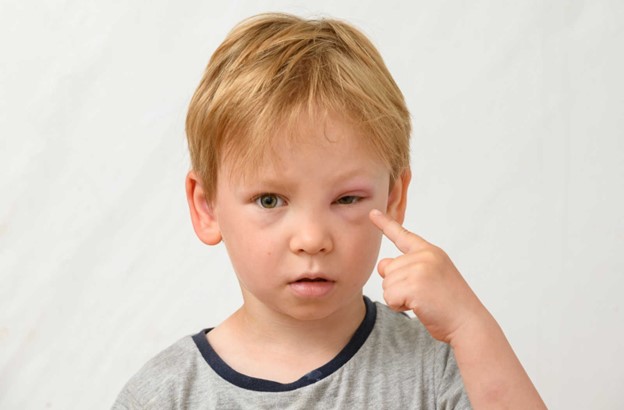A nurse in a clinic is speaking with a parent of a 1-year-old toddler who received her scheduled immunizations 1 hour ago. Which of the following findings reported by the parent is the nurse's priority?
"My child has some swelling around her eyelids and mouth."
"My child has a temperature of 100.7 degrees Fahrenheit."
"My child only ate 2 ounces during her last feeding."
"My child cries when I touch the area where she received the shot.".
The Correct Answer is A
Choice A rationale:
Swelling around the eyelids and mouth could indicate an allergic reaction, which can be severe in some cases. Anaphylaxis is a life-threatening reaction that can occur after immunizations. The nurse's priority is to assess and address any signs of an allergic reaction promptly. Swelling of the face, particularly around the eyes and mouth, is a red flag for potential anaphylaxis, and immediate intervention is necessary to prevent further complications.

Choice B rationale:
A temperature of 100.7 degrees Fahrenheit is considered a mild fever. While it's important to monitor for fever after immunizations, a mild fever alone may not be the nurse's top priority, especially if the child is otherwise stable. Fever can be a common post-immunization response and is often self-limiting.
Choice C rationale:
While monitoring the child's intake is important, only eating 2 ounces during the last feeding is not a priority concern compared to potential allergic reactions or fever. A temporary decrease in appetite following immunizations can be expected and might resolve on its own.
Choice D rationale:
Crying when the injection site is touched is a common response to discomfort from the shot. While it's essential to provide comfort and support to the child, this finding is not indicative of a severe reaction. It's not the nurse's priority compared to potential signs of an allergic reaction or a more significant fever.
Nursing Test Bank
Naxlex Comprehensive Predictor Exams
Related Questions
Correct Answer is C
Explanation
Choice A rationale:
Washing the child's pillow in cold water twice monthly is not a relevant instruction for controlling allergens in asthma management. Asthma triggers are often related to airborne allergens such as dust mites, pollen, and pet dander, and focusing on pillow washing alone does not address the broader issue of allergen exposure.
Choice B rationale:
Using a humidifier in the child's bedroom can actually worsen asthma symptoms. Humidifiers can increase the humidity in the air, promoting the growth of mold and dust mites, which are common allergens that can trigger asthma symptoms. Therefore, this instruction is not appropriate for asthma management.
Choice C rationale:
This is the correct answer. Using a damp cloth to dust the child's furniture weekly is a relevant instruction for controlling allergens. Dusting with a damp cloth helps to capture and remove allergens such as dust mites, pollen, and pet dander from surfaces, reducing the child's exposure to these triggers and potentially minimizing asthma symptoms.
Choice D rationale:
Installing carpet in the child's bedroom is not recommended for asthma management. Carpets can harbor dust mites, mold, and other allergens that can exacerbate asthma symptoms. Hard flooring surfaces that can be easily cleaned and do not trap allergens are a better choice for individuals with asthma.
Correct Answer is ["B","C","E"]
No explanation
Whether you are a student looking to ace your exams or a practicing nurse seeking to enhance your expertise , our nursing education contents will empower you with the confidence and competence to make a difference in the lives of patients and become a respected leader in the healthcare field.
Visit Naxlex, invest in your future and unlock endless possibilities with our unparalleled nursing education contents today
Report Wrong Answer on the Current Question
Do you disagree with the answer? If yes, what is your expected answer? Explain.
Kindly be descriptive with the issue you are facing.
